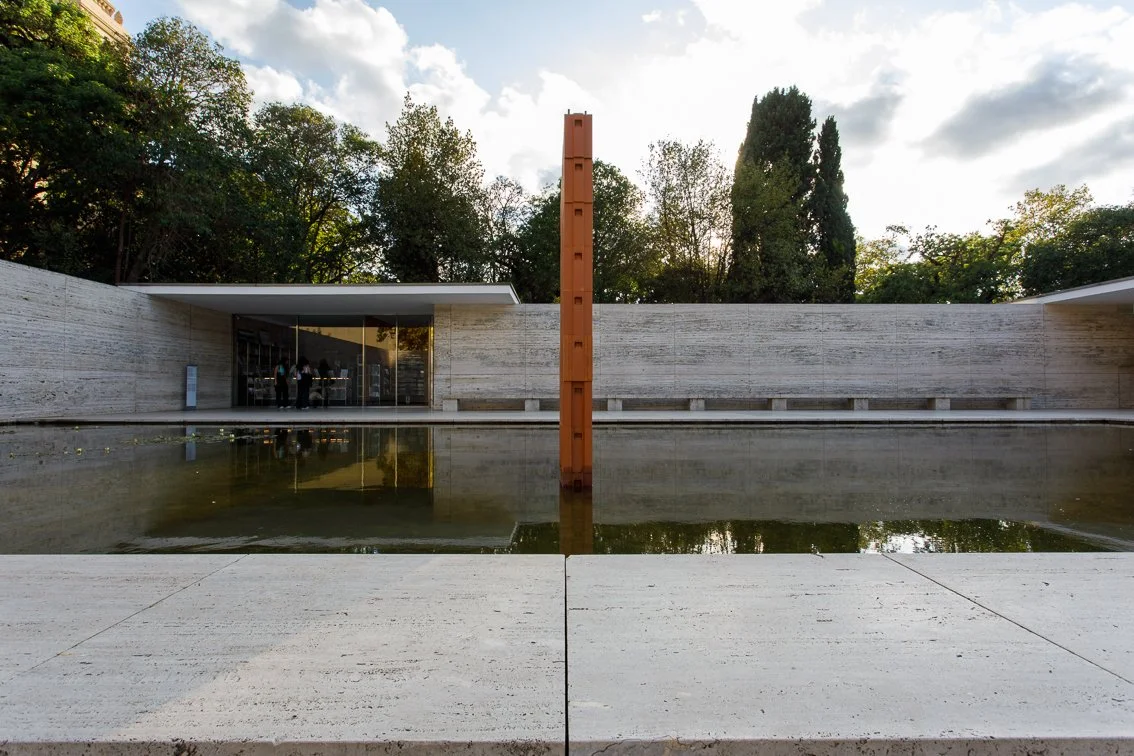Psicoarquitectura / Mies van der Rohe Pavilion intervention, sponsors and organizers: Mies van der Rohe foundation, Senda gallery, LAB 36, Barcelona Gallery Weekend Terreal, Fernando Pradilla gallery, Ella Fontanals Cisneros, dates: 14-9-2023 > 8-10-2023, photography by ©Anna Mas and Oscar Abraham Pabón
With the Psychoarchitecture intervention, Oscar Abraham Pabón approaches the constructive materiality of the Mies van der Rohe Pavilion from its interpretive and psychological dimension.
In a first act, the artist takes as a point of reference the symmetrical shapes that are created on the surfaces of the Pavilion and draws a parallel with the shapes of the sheets that the psychiatrist Hermann Rorschach (1884-1922) created by folding a sheet with an ink blot as a projective method to assess and diagnose the person looking at them based on what they see. The answers that are generated in the attempt to give figurative meaning to the ambiguity of the forms reveal the aspects of mental life implicit in the act of knowing. In the same way Oscar Abraham Pabón proposes a turn that takes us from the object to be interpreted to the interpreted subject.
As a second act, he presents us with the materialization of a wall over the Pavilion’s large pond made of terra cotta blocks (Calibric ONE). On the surface of the wall is the drawing of a new ink stain made from its interpretative possibilities and which is interrelated with the Pavilion and with its own reflection that duplicates it in the water.
The block of clay is offered as an object of interpretation, where the walls are approached as a surface or skin that, showing at the different levels of the layers that make it up, makes it tangible and brings an internal dimension to the surface ; which involves both the constructive history of the material and its role in the architecture and town planning of the 20th century.
“If the German pavilion of 1929 symbolizes the future of the modern house, the “Psychoarchitecture” proposal offers an interpretation of the future of this modernity, but now from a psychic and somatized dimension, I understand the brick of clay like a skin that covers much of the architecture and the city inherited from the modern project”




















